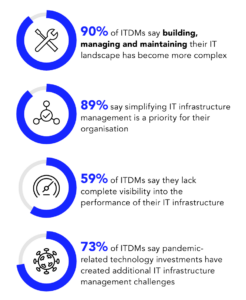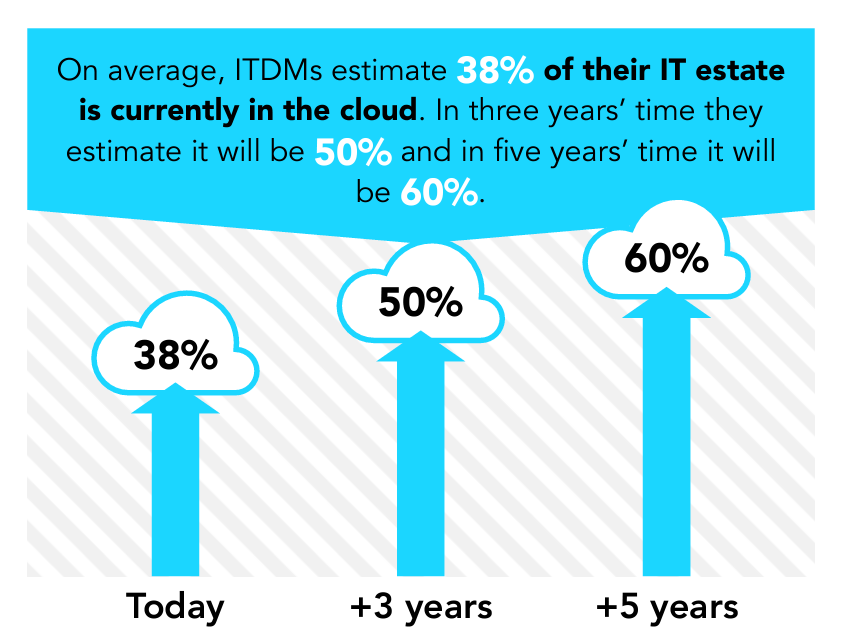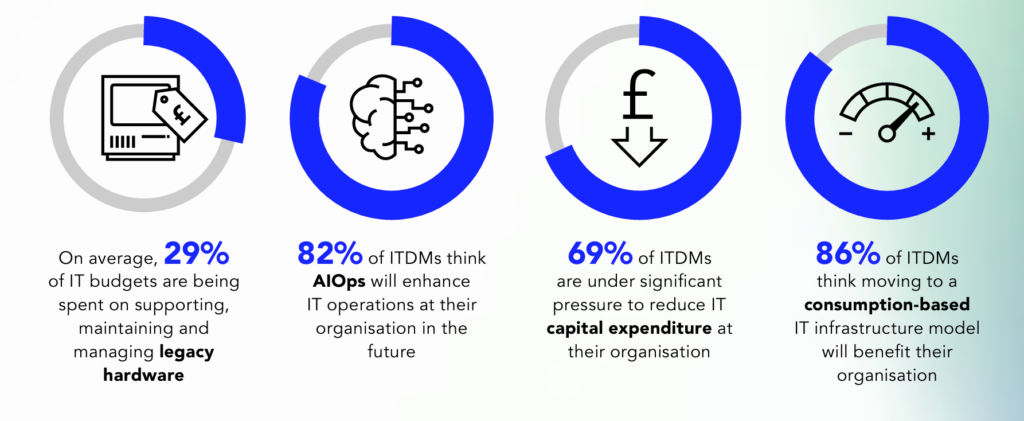Legacy IT infrastructure is a sustainability nightmare

- A recent report shows the rapid changes IT infrastructure is undergoing.
- Legacy tech can slow down an organization’s whole IT modernization program.
- IT leaders reveal the infrastructure problems they’re having – and what they forecast for the future.
Legacy infrastructure is a sustainability issue for IT professionals, who rank energy efficiency and sustainability as important, but don’t feel confident about meeting their green targets.
All this and more has been revealed by research by Daisy Corporate Services on legacy tech with a focus on the cloud. Researchers heard from more than 250 senior IT decision makers at large private and public sector organizations in the UK, uncovering what they consider to be the key IT infrastructure challenges facing them and their teams – and how to overcome them.
The report provides insights into IT decision makers’ challenges including the global IT talent shortage, the drivers for IT outsourcing and factors for on-premises vs. hosted IT infrastructure.
75% fully (24%) or partly (51%) outsource their organization’s IT infrastructure management to a managed service provider. Partly due to the global talent shortage, IT decision makers felt that their organizations lack the necessary skills and expertise to stay in-house. 
If that wasn’t enough, the report further details predictions, barriers and benefits of moving more of the IT estate to the cloud and looks at IT budgets, investments, and the impact of and opinions on new tech like AI – thought it’d been left out?
Over the last five years, businesses have had to manage the significant evolution of business systems and IT landscapes, with the pandemic a driver of that change. Increasing competition and globalization have affected the operating environment, which has further changed as a result of political and supply chain instability.
The increasing range of technologies and applications was in joint first place for contributing most to IT complexity alongside cloud services (57% each). Full visibility into infrastructure performance is made difficult by both of these factors.
90% of IT decision makers say building, managing and maintaining their IT landscape has become more complex and simplifying IT infrastructure is a priority for 89%.

Moving your IT infrastructure to the cloud – an unstoppable trend?
Despite that, though, the benefits of cloud use are obvious, so it’s increasing.
The ability to harness the cloud is dependent on the existing IT landscape at a company, with the biggest barrier to success being that the greater complexity of existing IT infrastructure, the greater is the work needed to migrate to the cloud.
Another significant threat to organizations looking to move more of their IT estate to the cloud are data security concerns.
Too often, organizations find they’re using a cloud hybrid system by accident, not design. Which means falling at the first hurdle in a world where it’s vital that an organization’s infrastructure is secure and able to dynamically adjust to workload demands.
The multitude of different environments and tools in use make it hard for organizations already struggling to gain the end-to-end visibility necessary for consistent security and reliability.

There is a strategic impact from sustainability as the issue becomes a business differentiator; the importance of green policy use means that consumers look to a company’s sustainability as a major factor of their appeal.
The focus on corporate and social responsibility filters through to IT teams as businesses turn their attention to the sustainability and efficiency of their IT operations.
The biggest hurdle to a clean, green transition is legacy and on-premise infrastructure: legacy tech was described by 63% of IT decision makers as a “sustainability nightmare.” 86% say sustainability and efficiency is important to IT operations, and 84% that their organization has IT sustainability targets in place – but only 51% of them are “very confident” they’ll meet them.
And it isn’t just contributing to a difficult transition to greener systems: legacy hardware contributes to 37% of organizations’ overall IT power consumption.
Spending is also coming under pressure as the global economic slowdown means businesses are having to adapt for survival – driving efficiencies is one tactic for survival that has huge impact on IT teams.
IT leaders are under pressure to reduce expenditure, many resorting to cloud services to turn capital infrastructure expenses into opex costs.

“Sustainability is a vital component of any modern business, and IT departments have a growing role in helping the wider organisation achieve green targets. But legacy technology is a cause for concern among IT teams, with ageing equipment still contributing significantly to power consumption,” comments Andy Bevan, head of propositions and strategy consulting at Daisy.
“Organizations can benefit from the sustainability features of their cloud providers but are being held back by the challenges of migrating their legacy hardware. Here is where modern hybrid cloud platforms can help bridge the gap between on-site infrastructure and cloud to deliver performance and sustainability benefits.”
Many IT leaders are being asked to re-evaluate their IT spending. More than two thirds (69%) of survey respondents describe the pressure to reduce IT capital expenditure as “significant.” Many are looking to consumption-based pricing to reduce ongoing costs and increase flexibility by paying only for what they use – scaling up and using more resources at peak times, and then reducing resources and costs again afterwards.
Legacy infrastructure is a headache in this process though, as its maintenance and support incurs significant cost. New technology is the solution for some IT managers, with many expecting to see the benefits of using artificial intelligence and automation in areas like service and performance management.
Bevan adds, “At a time when IT leaders are under pressure to reduce capital expenditure many organizations are still incurring significant maintenance and support costs on their legacy hardware. By moving to the cloud and a consumption-based pricing model, organizations can reduce ongoing costs and increase flexibility by paying for what they use. For cost-constrained IT departments this should be their nirvana.”
The full research from Daisy, Faster, greener, cheaper – dealing with IT infrastructure complexity in a hybrid cloud world, is available here.








